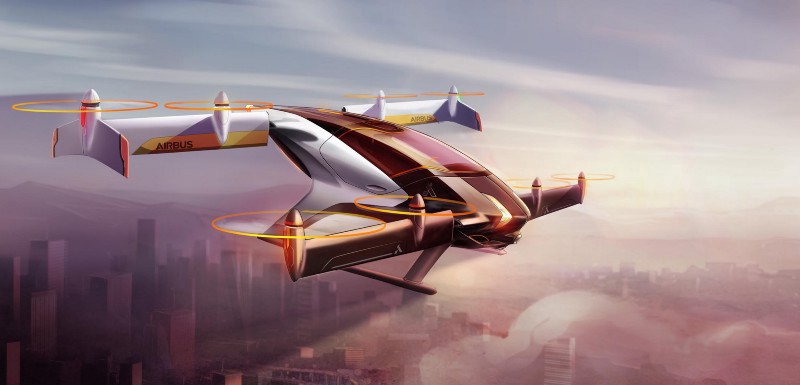Airbus Plans to Test First Airborne Taxi by End of 2017
January 18th, 2017

Image Source:Project Vahana
Imagine requesting an Uber ride but no longer having to wait for the traffic and price surge to go down, and you will be riding a flying car! The future has finally arrived.
Airbus, known as the world’s biggest producer of commercial helicopters, has announced they started developing their first airborne taxi last February, and expect to have their prototype tested by the end of 2017. The preliminary name for this airborne transportation will be called Vahana, which is an airborne vehicle that will be carrying individual passenger or cargo. The ultimate goal is to have these vehicles operate autonomously in 5-10 years time with a relatively low cost for mass consumption.
New Features of Vahana
Airbus’ new division, called Urban Air Mobility, has been exploring vertical take-off and landing (VOTL) style vehicle transportation through Project Vahana, specializing in urban air transportation prototype testing. According to Vahana’s blog, the vehicle will operate similar to the current helicopter: starting with a vertical takeoff, forward flight and vertical landing. A significant difference from a normal helicopter would be that Vahana will have 8 fan tilt-wings in total instead of rotor blades.
This design not only helps to improve the controlling system, such as cruise aerodynamics and flight control, but also helps the aerodynamics analysis and keeps the overall vehicle footprint small. Vahana will also be running on clean energy, ideally electric power to reduce the emission of air pollutants.
Demand for a New Type of Transportation
The need to build Vahana arose in Airbus when the CEO, Tom Enders, saw a great potential in air vehicle transportation in the next decade. This growth will happen particularly in countries with increasing megacities that will be facing traffic issues, such as Chengdu, Lahore, Hyderabad, Ahmedabad, Bogota and Luanda.
In fact, the demand to develop new transportation to lessen traffic congestion is not uncommon. Companies such as e-Volo have been trying to create air transport prototype like Volocopter. In 2016, China also ran a trial test on its first public Transit Elevated Bus (TEB), which hopes to alleviate the serious traffic jams in the country’s busiest cities.
Future Challenges
This future change in the aviation business also faces major challenges, particularly regulations concerning the operation of autonomous flying vehicles over urban areas. Airbus is confident that Vahana will be a game changer that can modify the current traffic regulations.
ABOUT THIS PAGE
Psiphon Today is brought to you by Psiphon Inc. Please visit our Privacy Policy, and find out how you can contact us.



